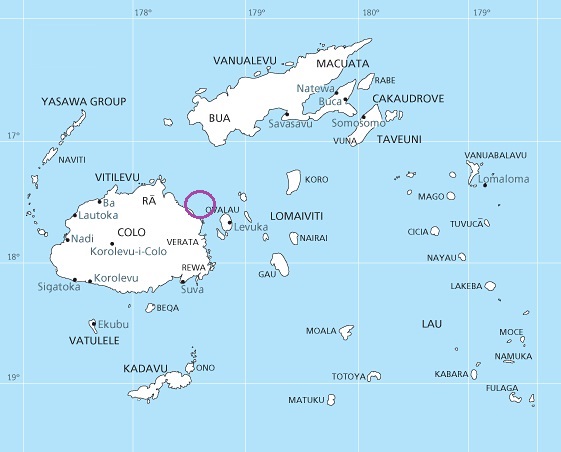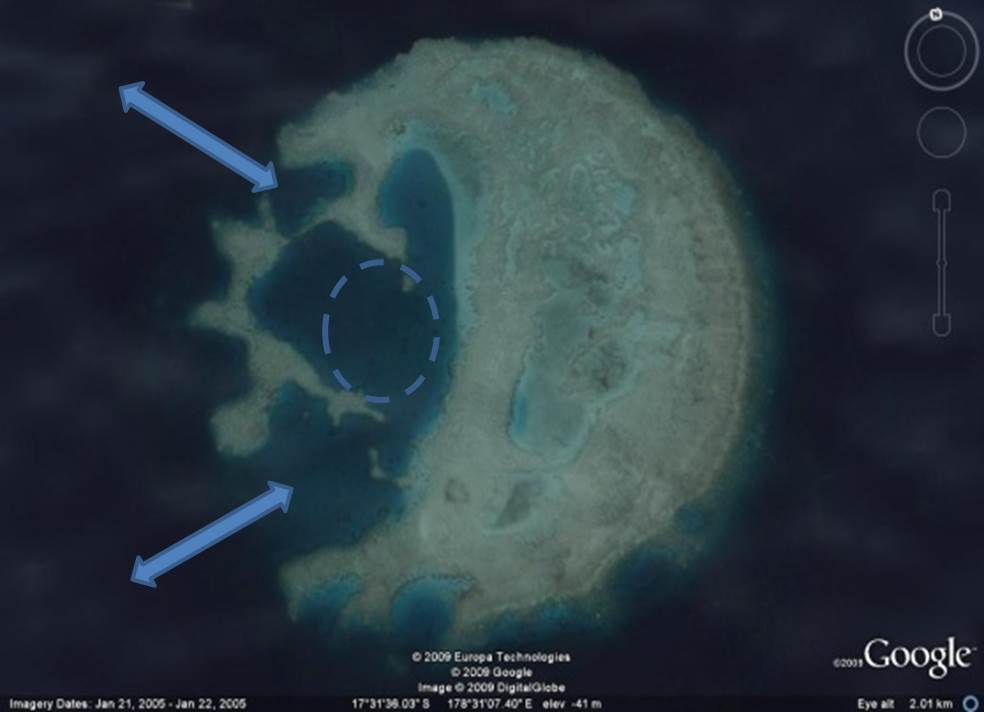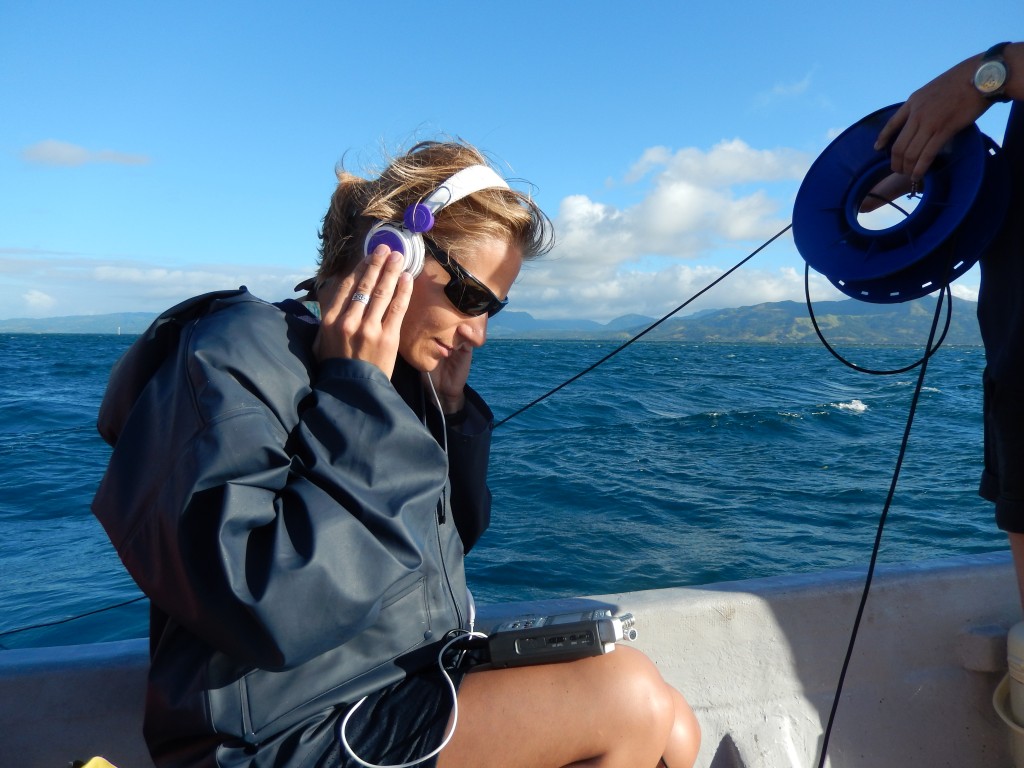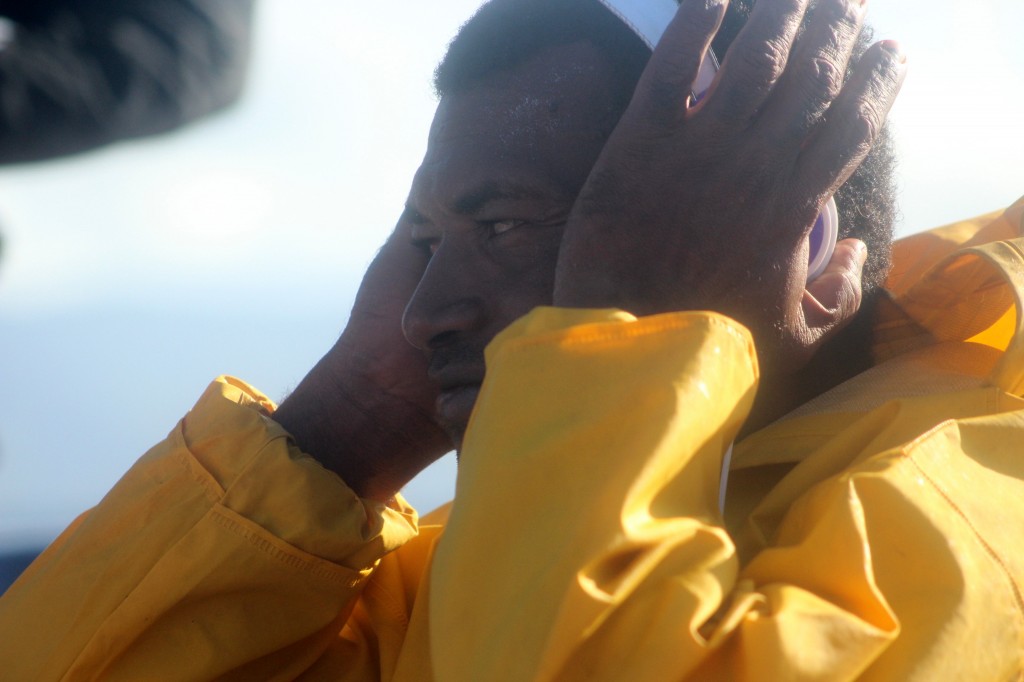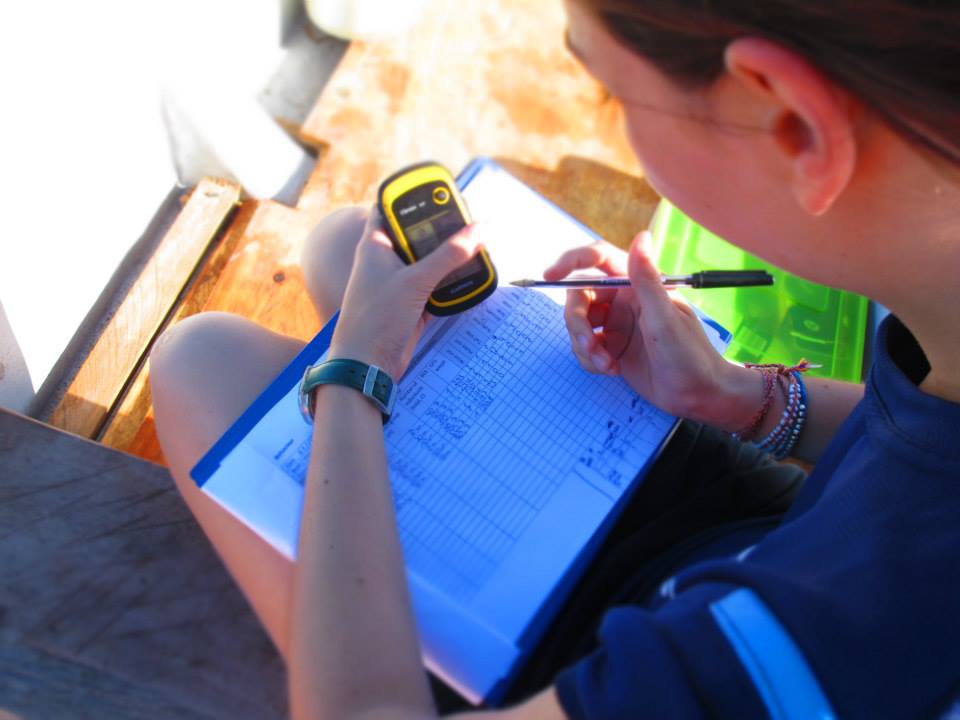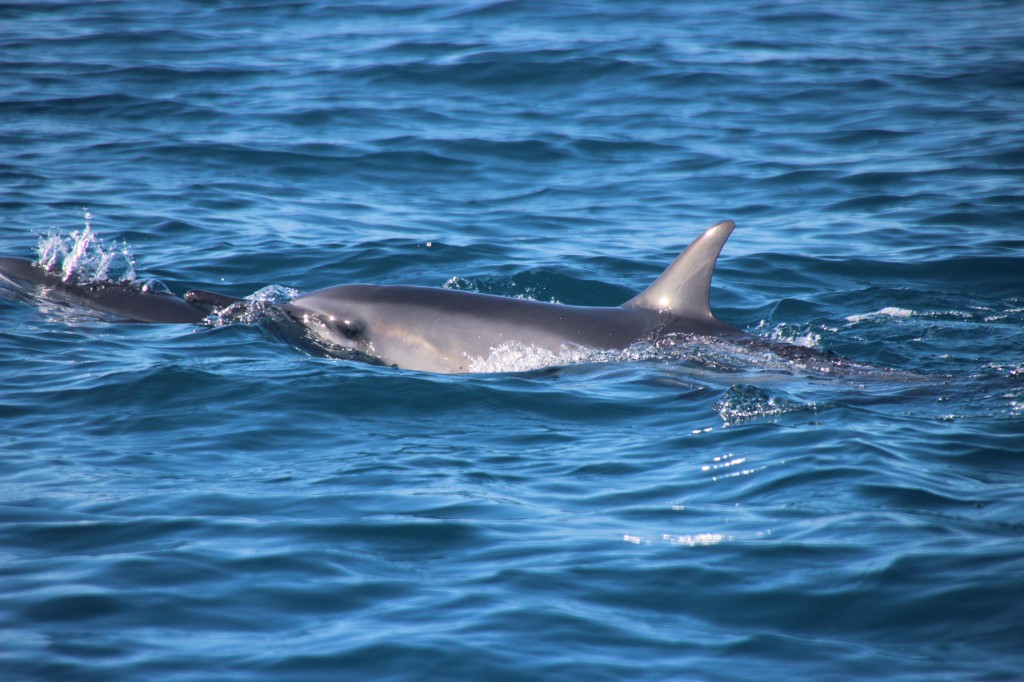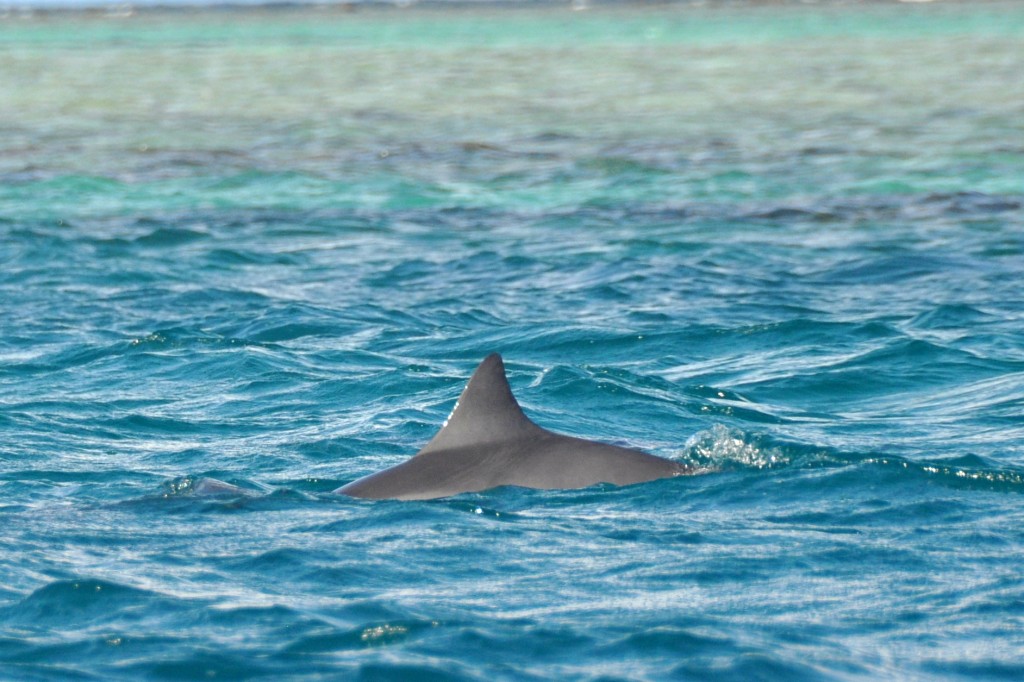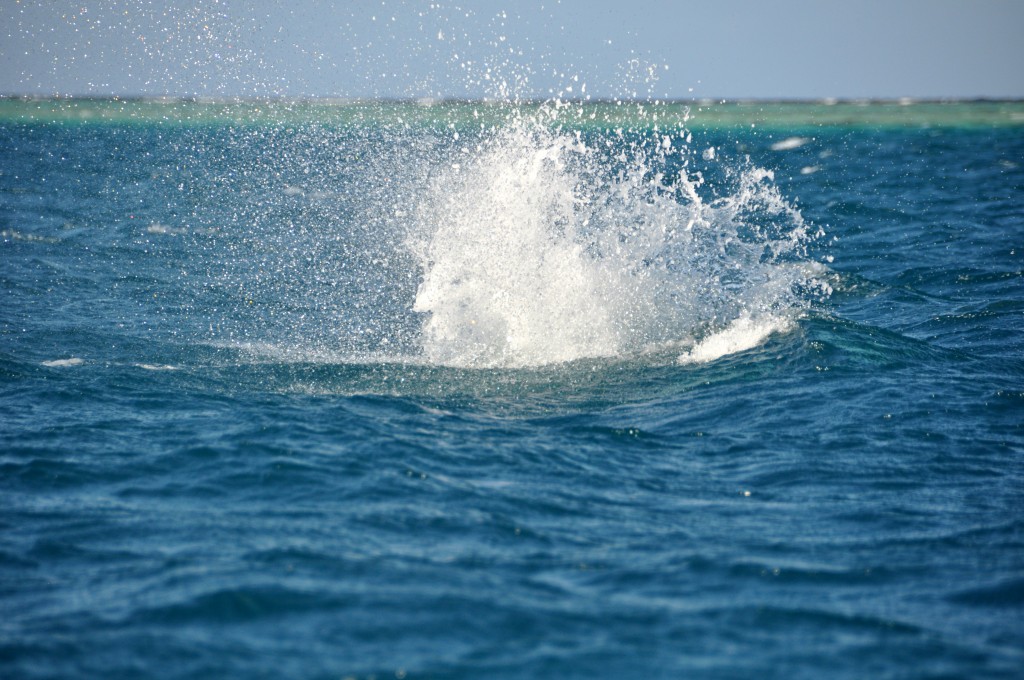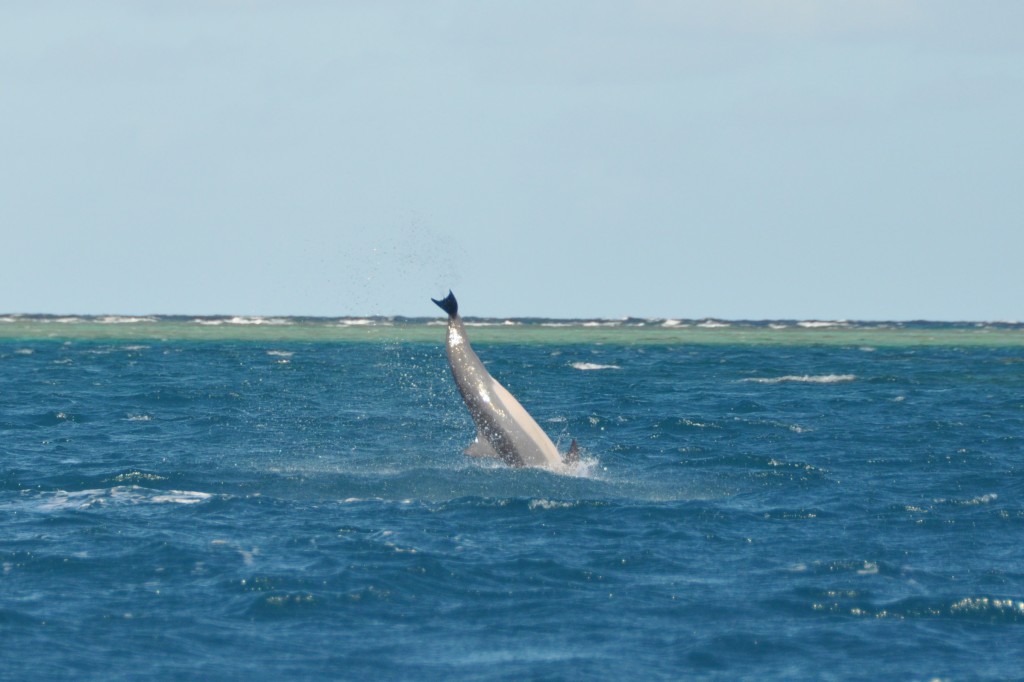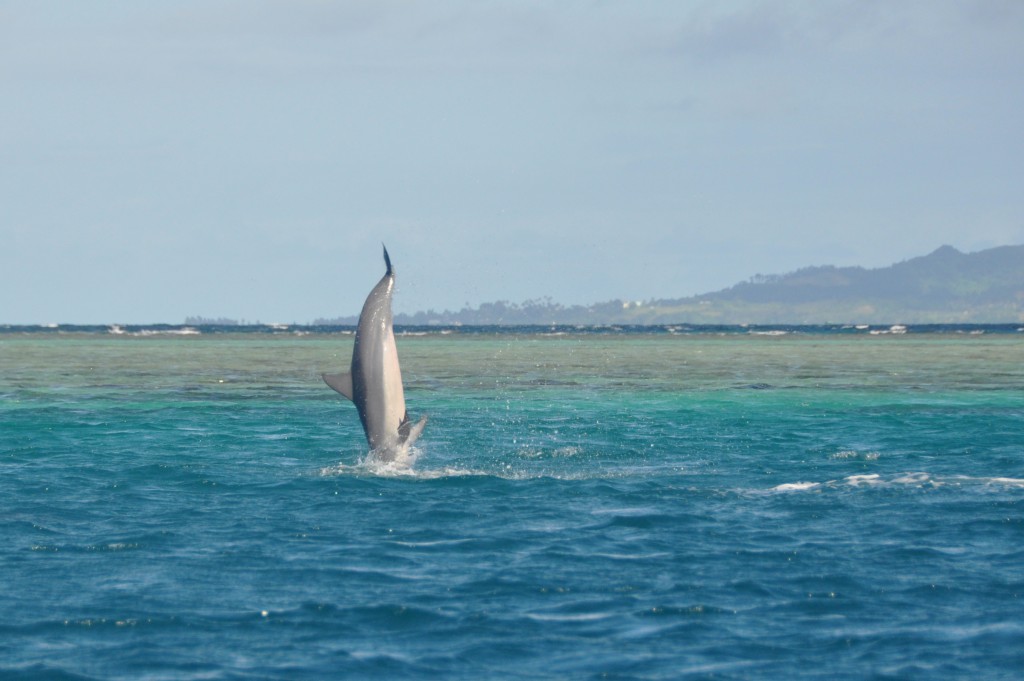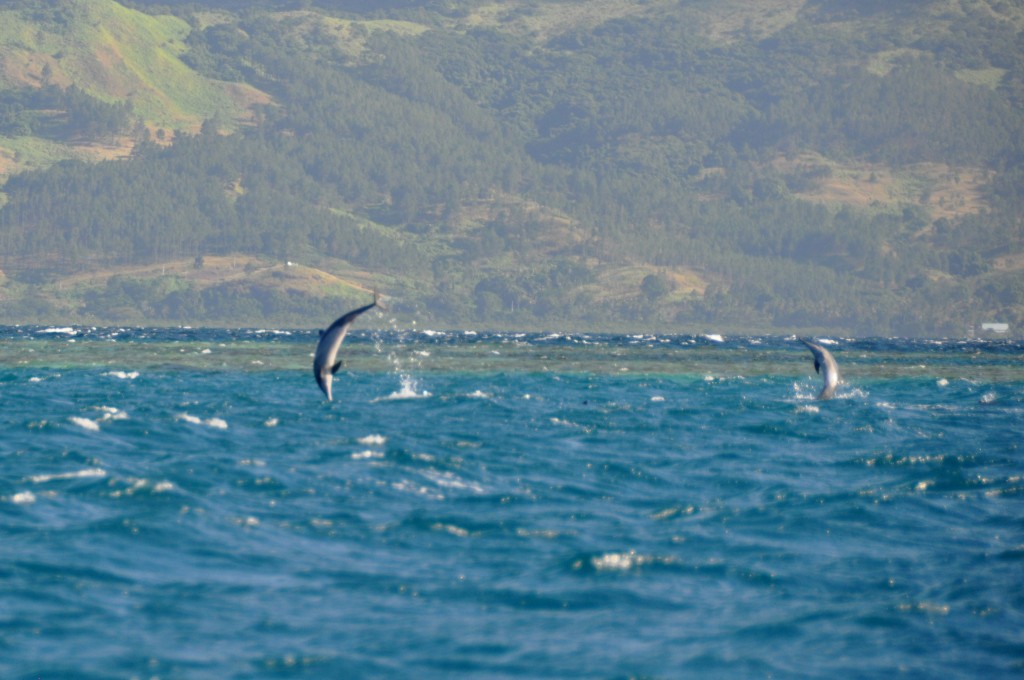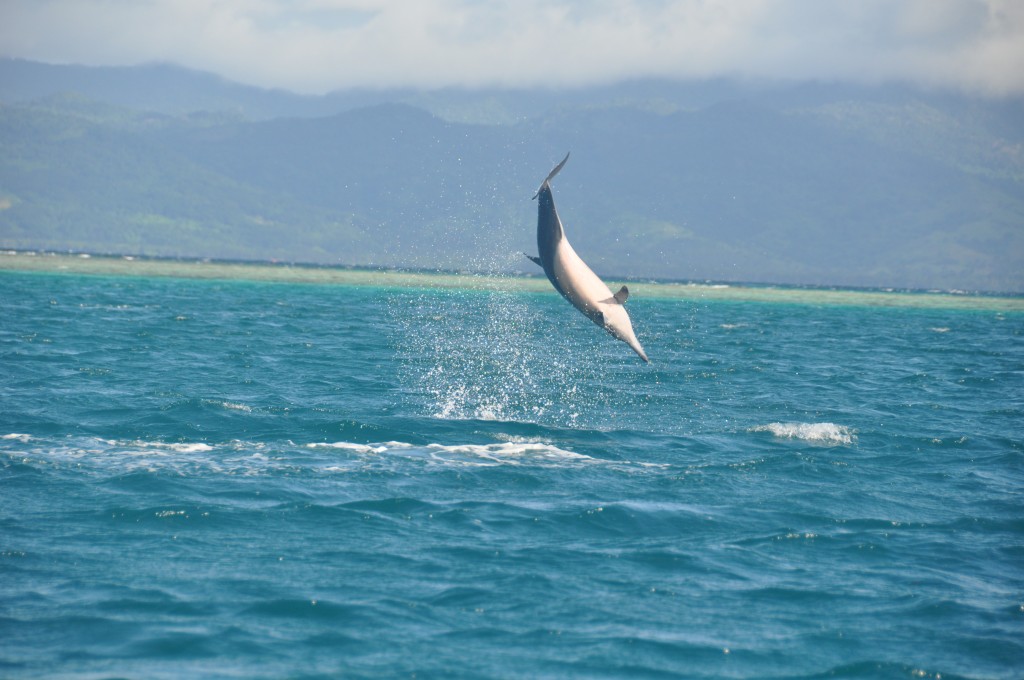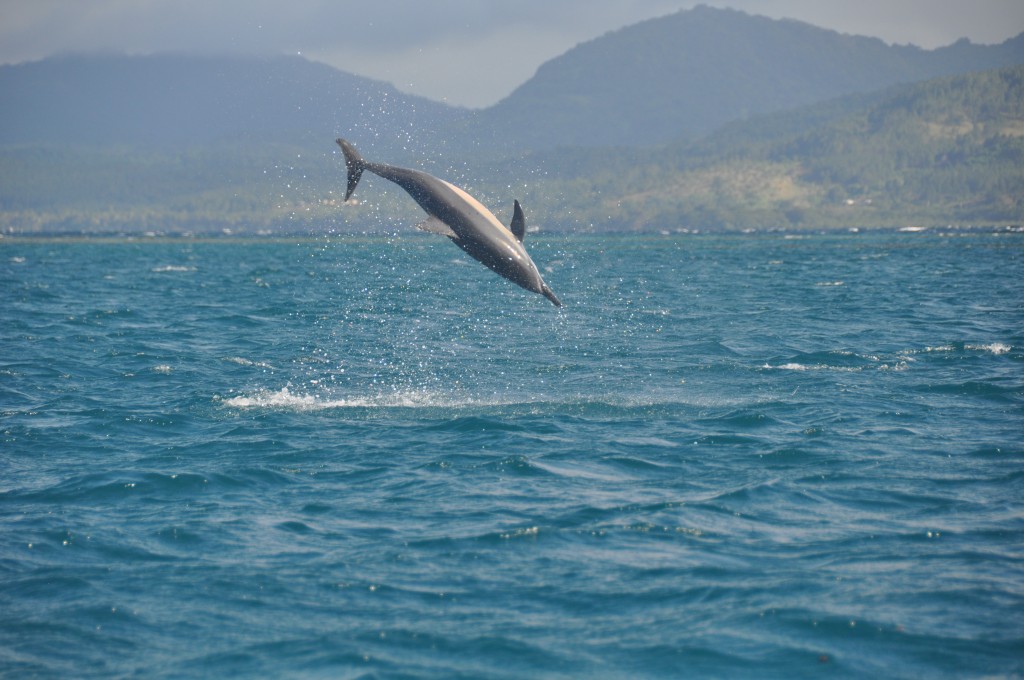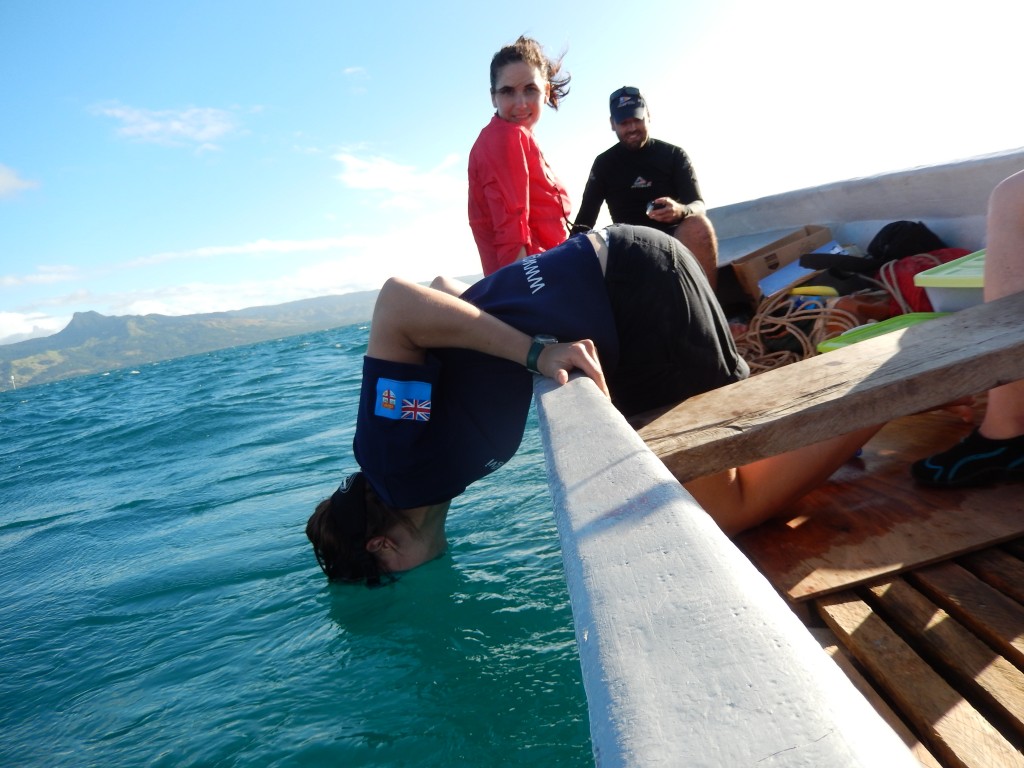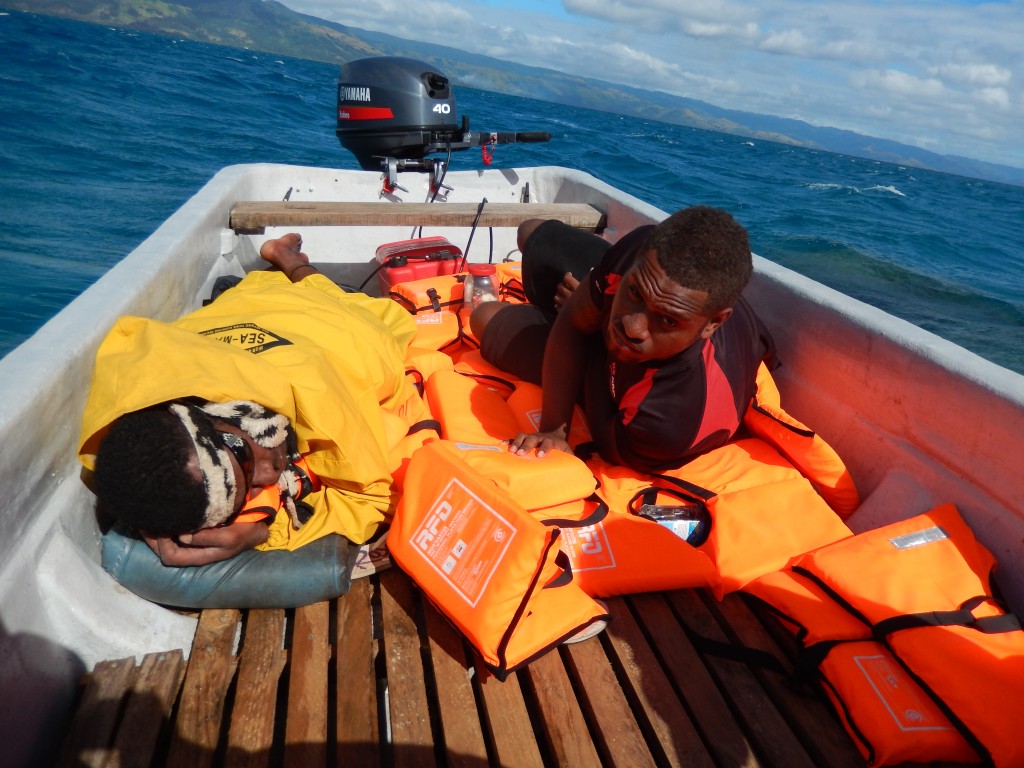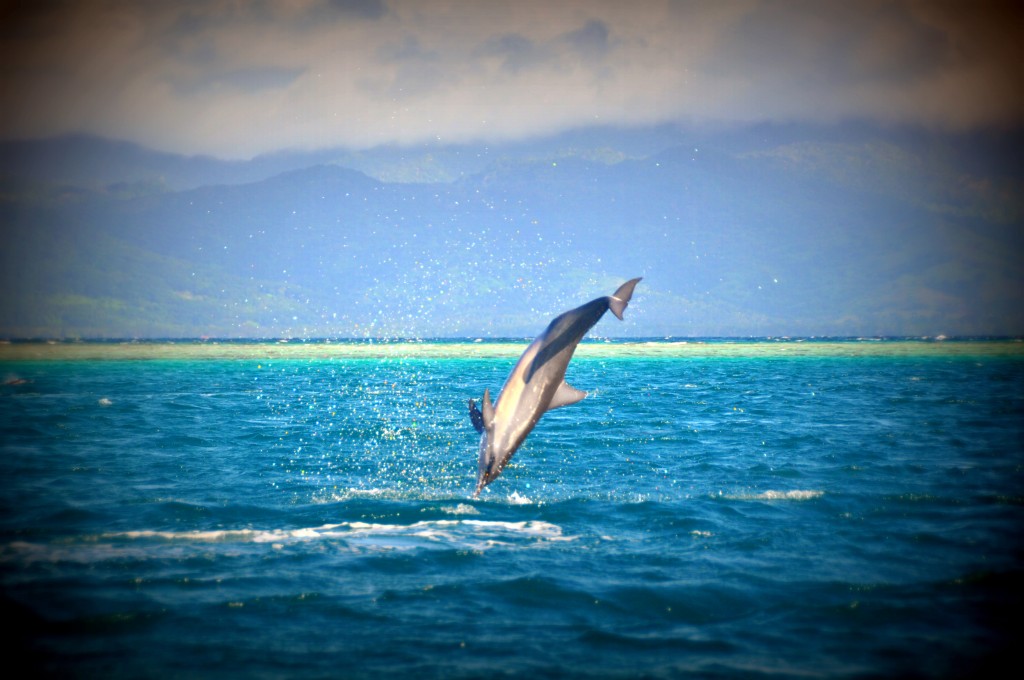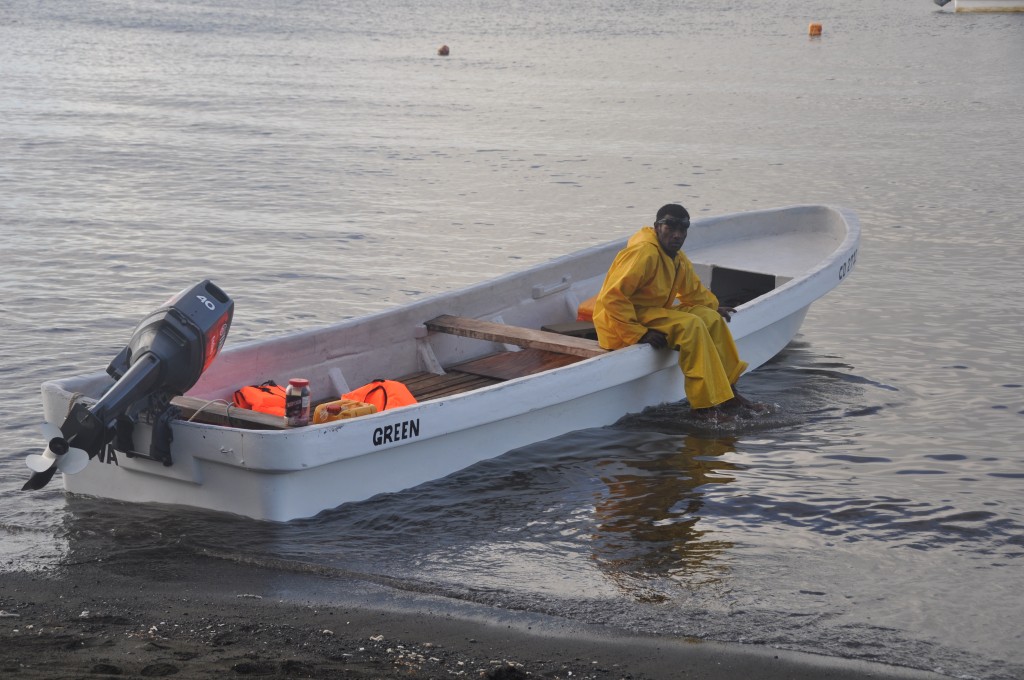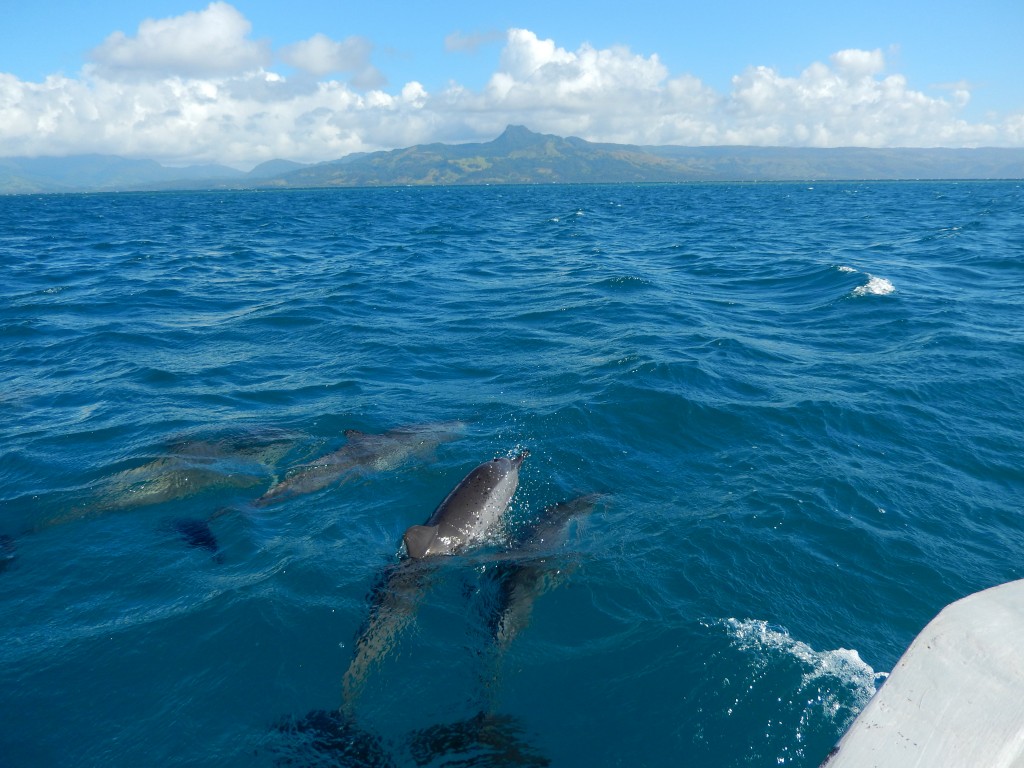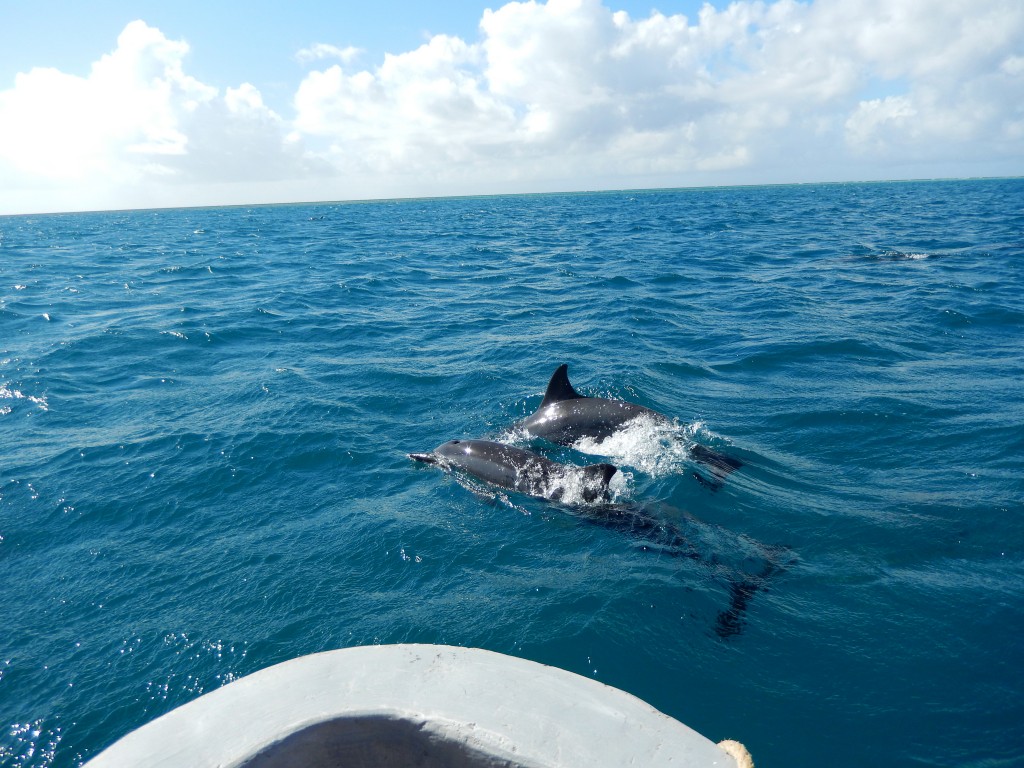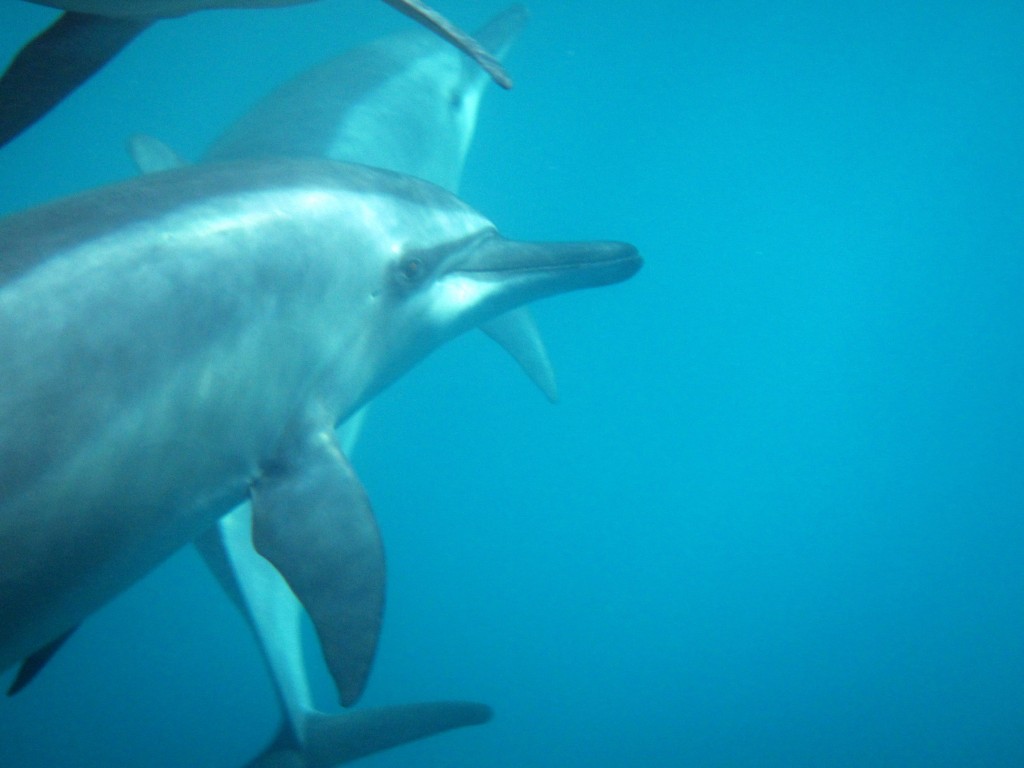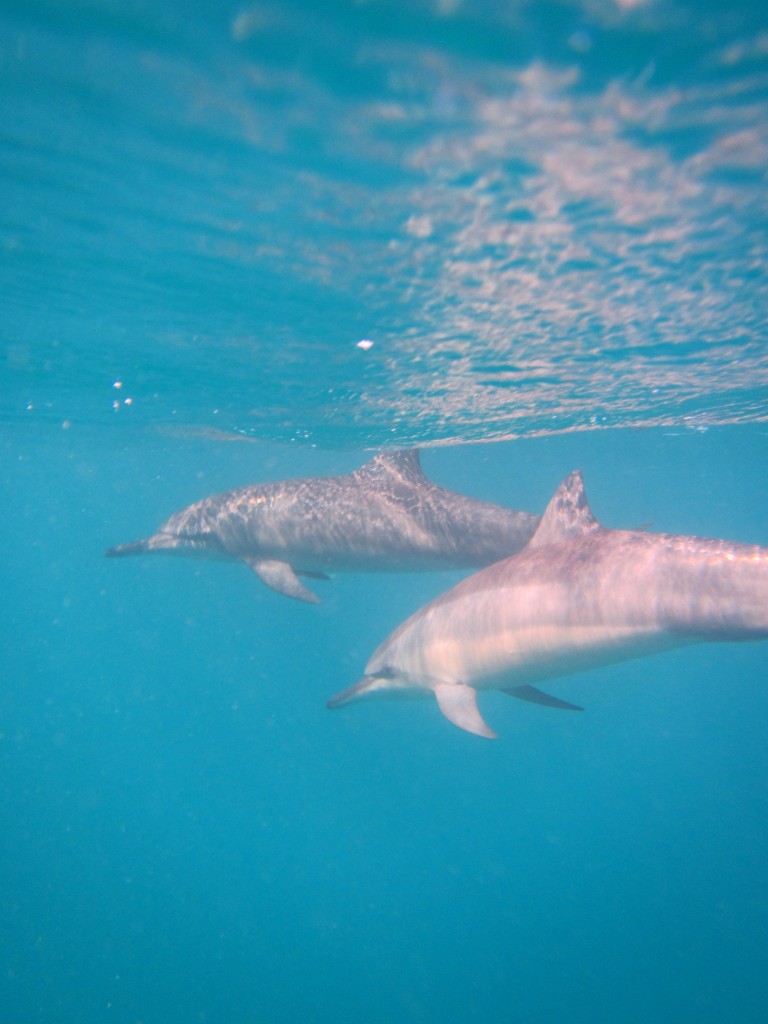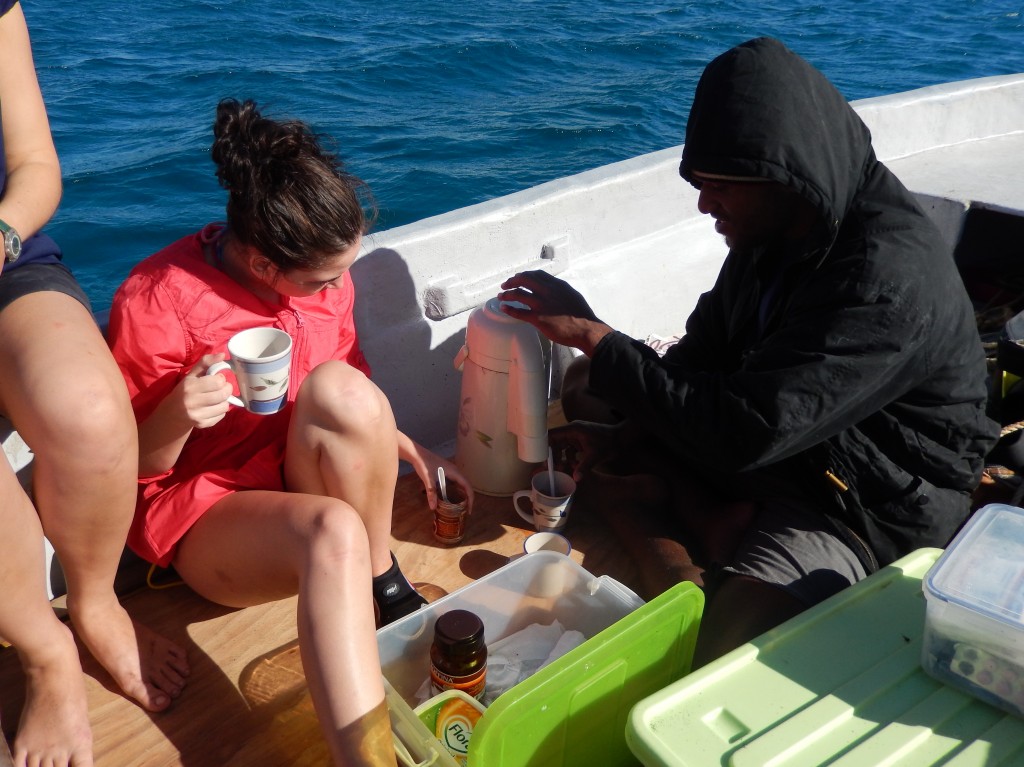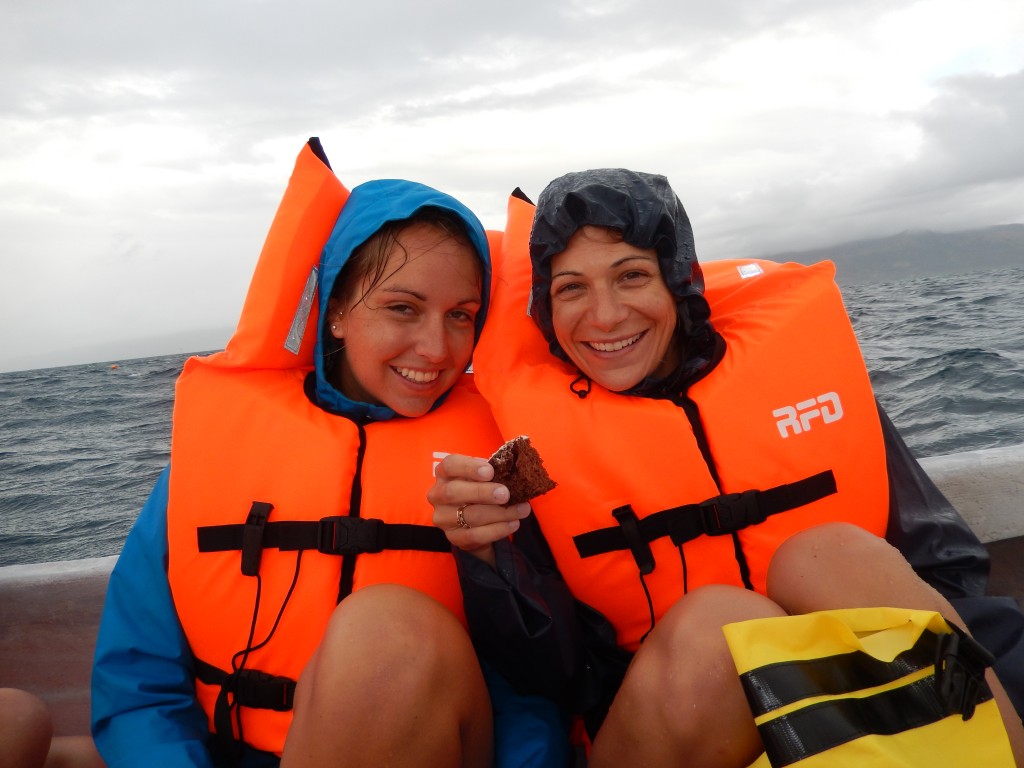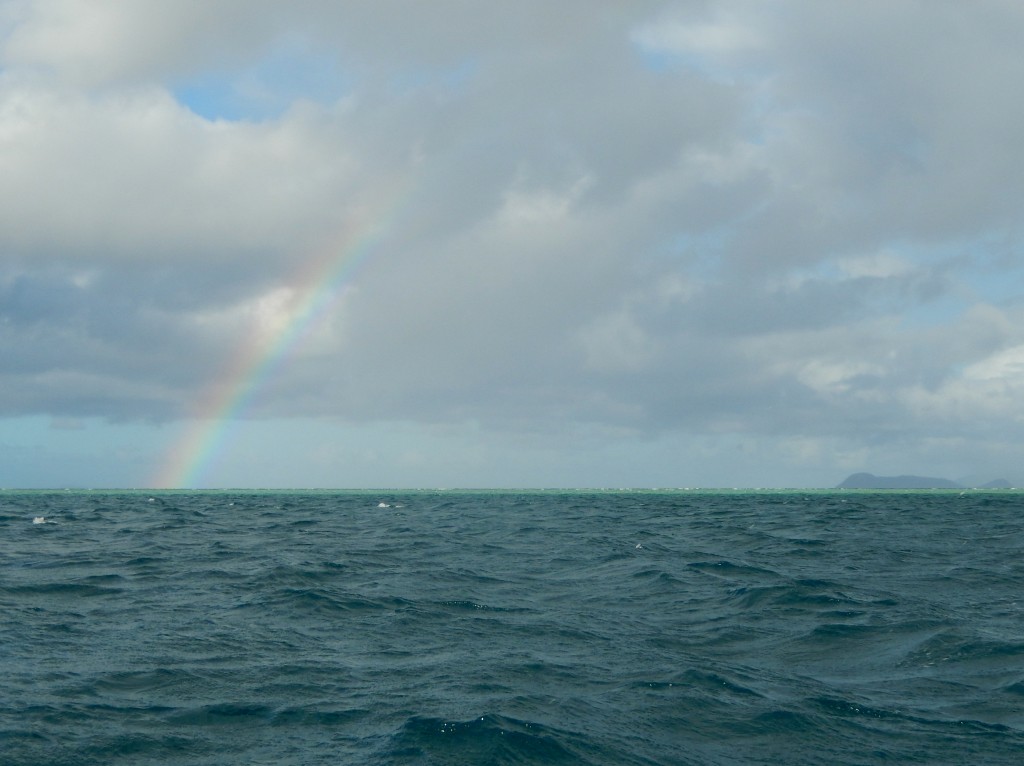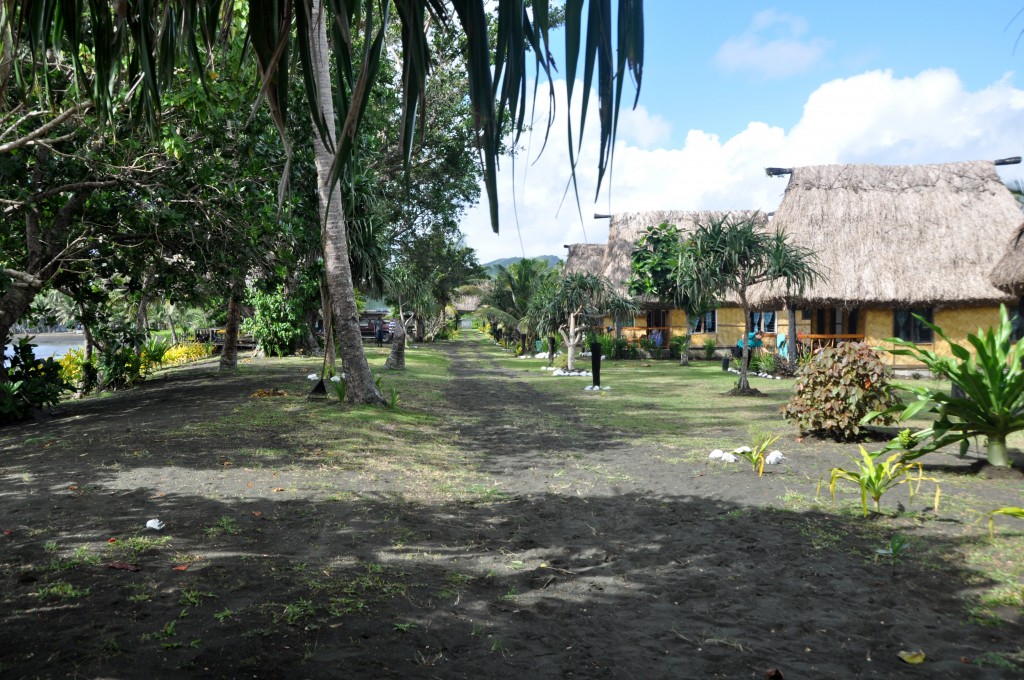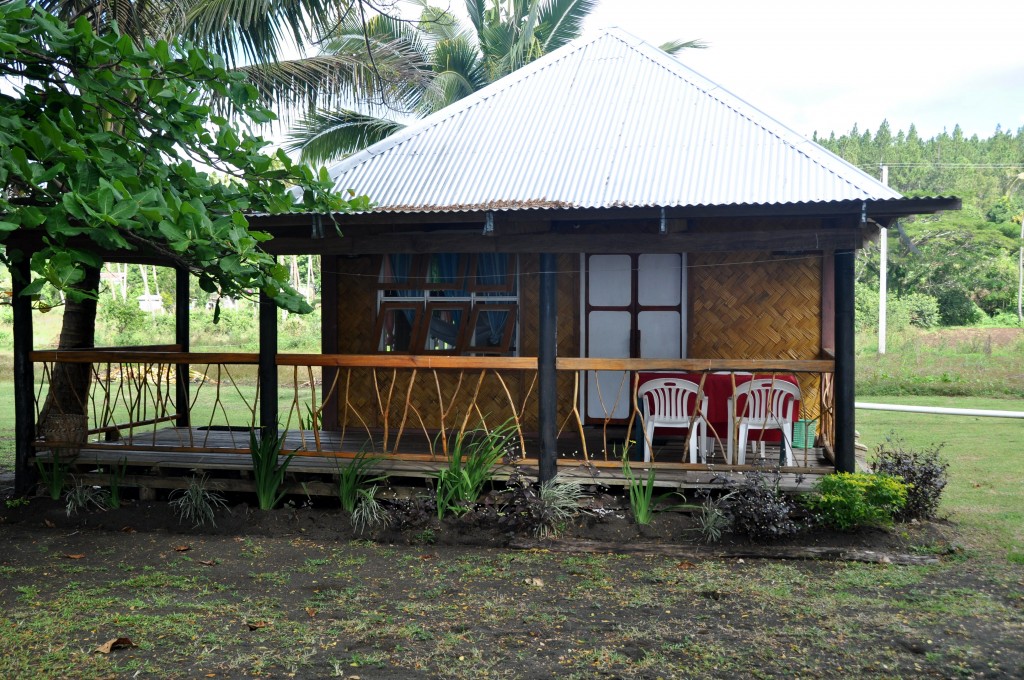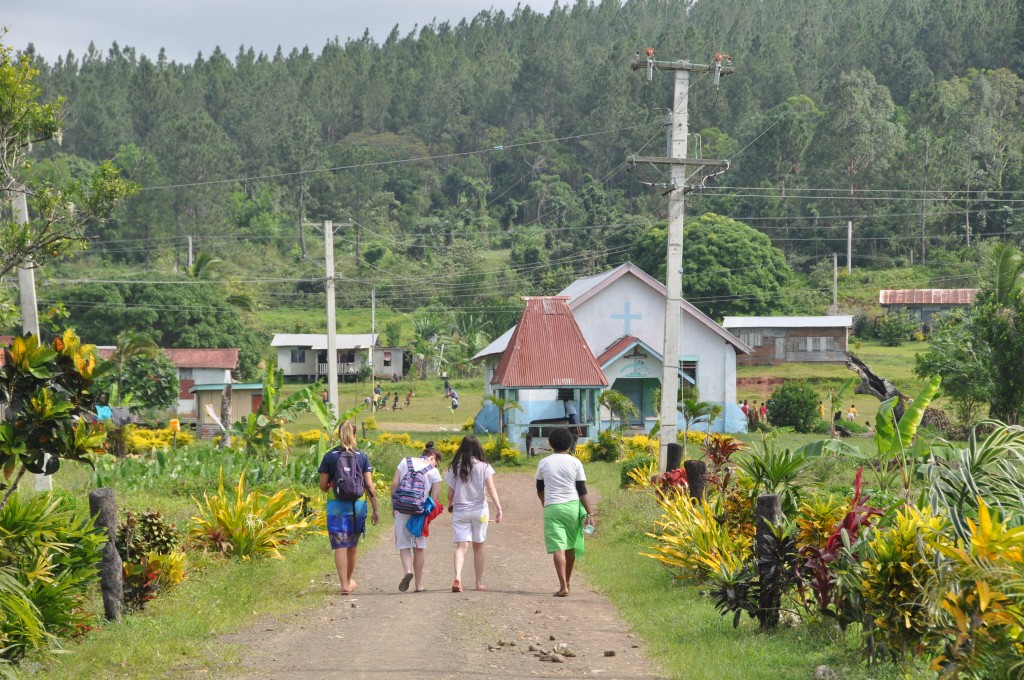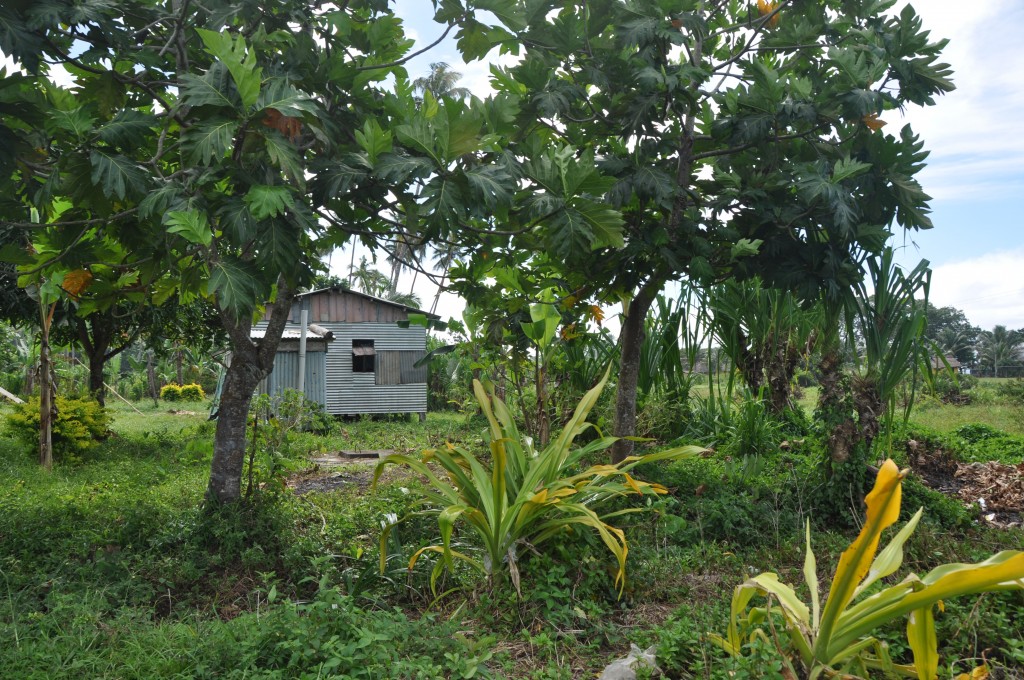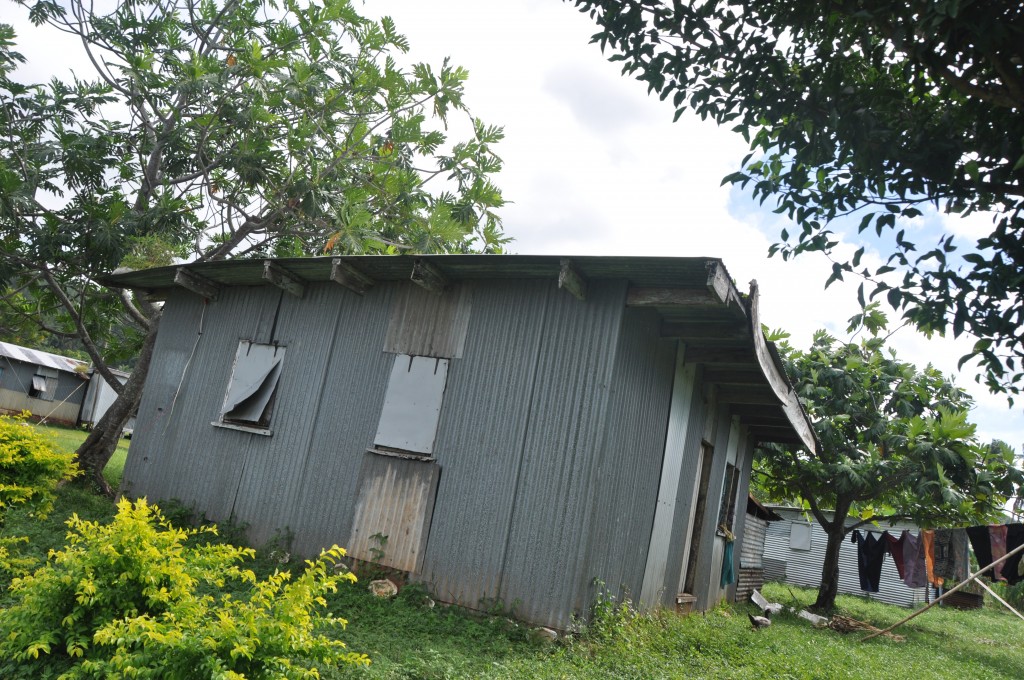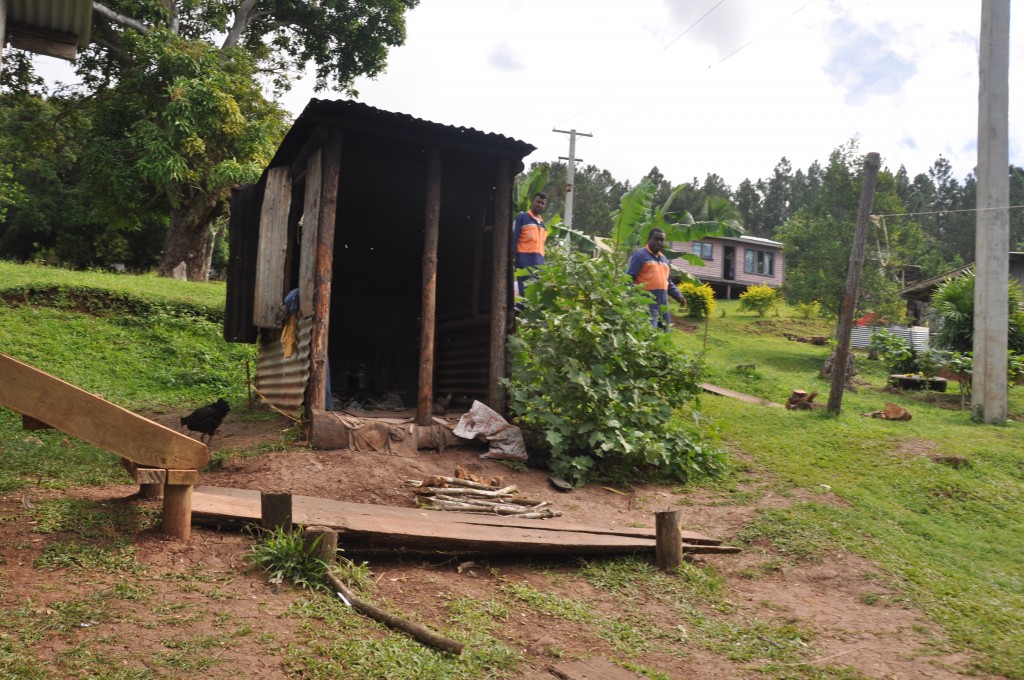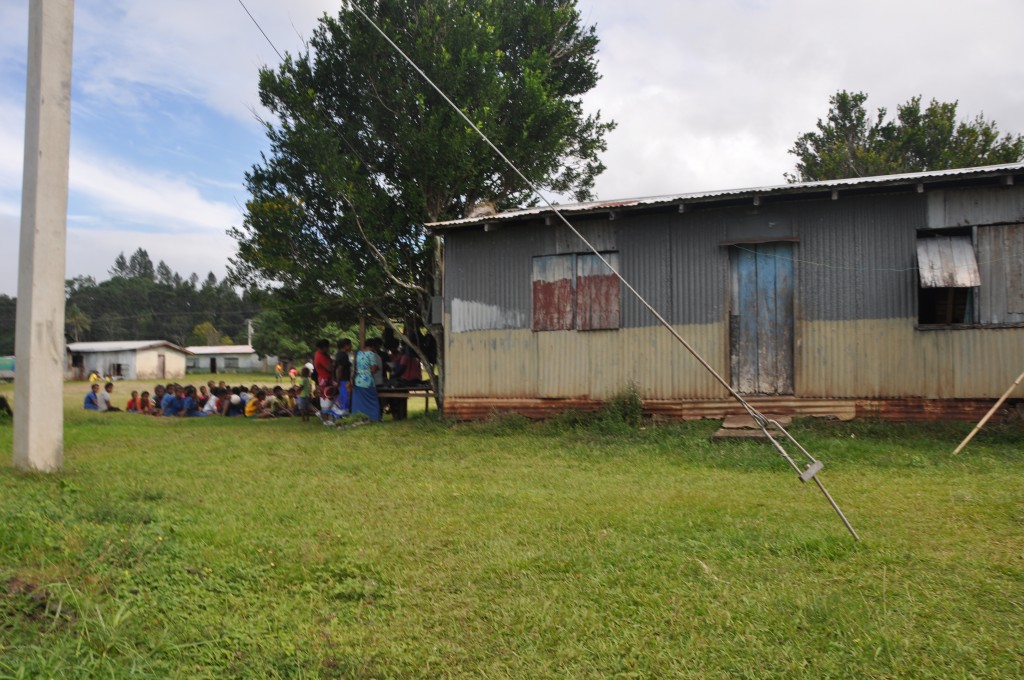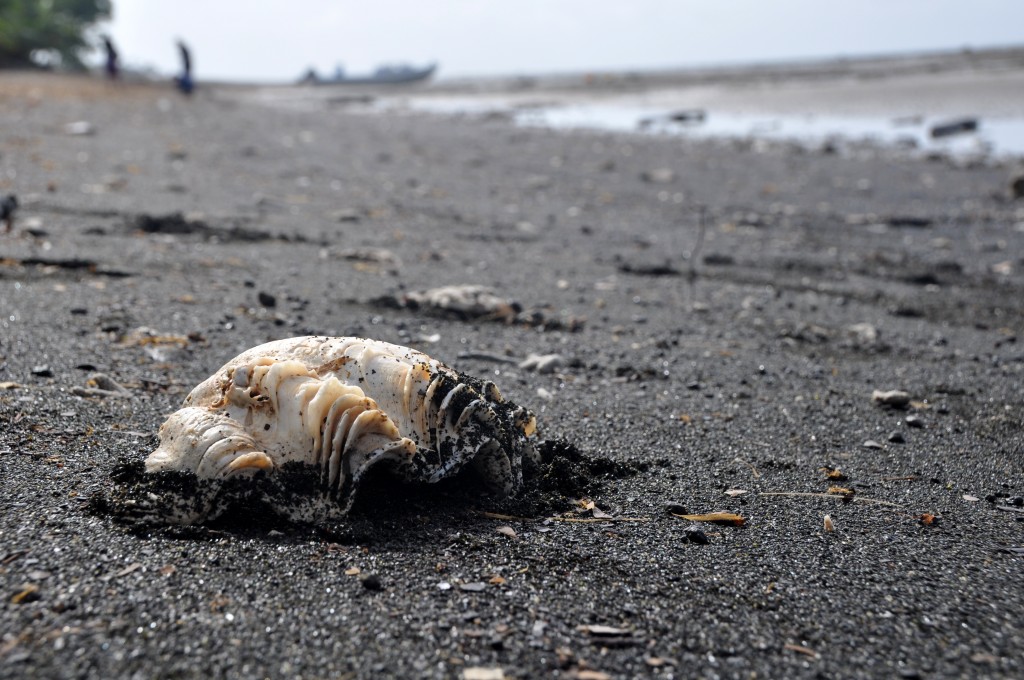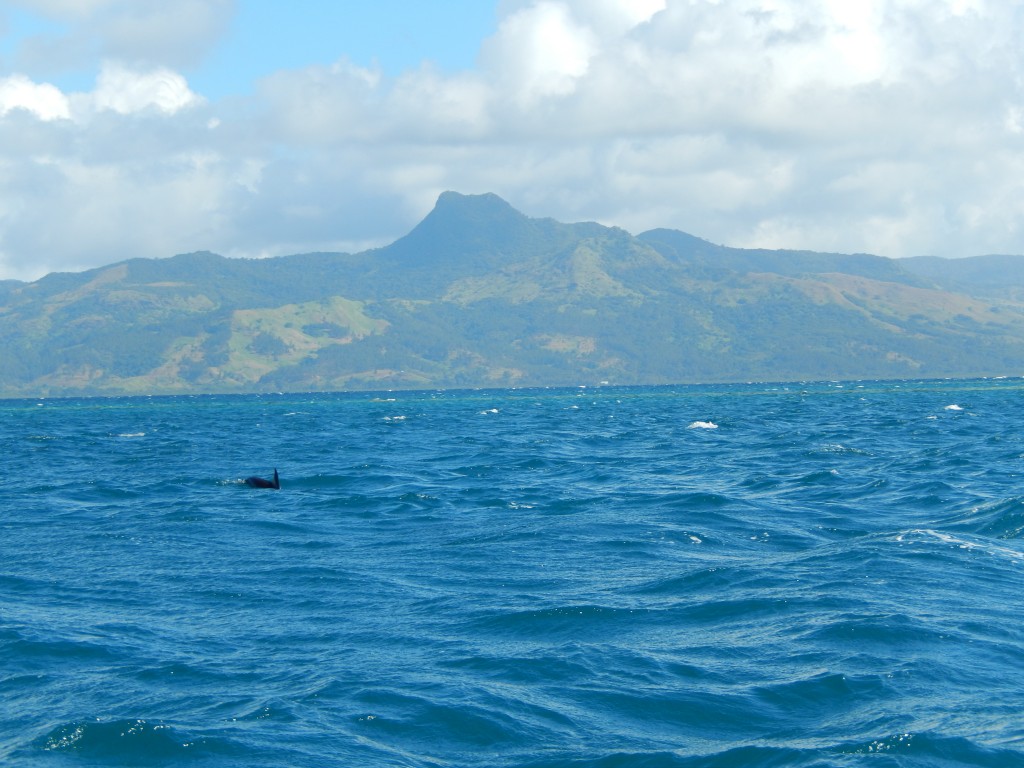So…finally…the entire reason for this incredible journey: babale! (Fijian for dolphin!)
Moon Reef sits 7.3km off the eastern coast of Viti Levu and is home to a very unique Spinner dolphin pod.
Every day the dolphins do the same thing: around 4-5pm they leave the reef, swimming to deep passages to forage during the night, and then return to the reef between 6-8am to rest. They never stay in the reef overnight, as then they would miss their only meal. The reef is shaped like a moon with only two points of entry/exit, making it a safe and calm place for this pod of +/- 50 dolphins to recuperate from their journey and enjoy their food-coma.
Most dolphin pods migrate between cold foraging waters and warm nursery grounds, or follow the migration of their prey species. The site-fidelity of this group is exceptionally uncommon. The plus side of this being that this predictable behavior is very helpful when it comes to research. On the flip side, it also makes them a prime target for harmful tourism practices.
Research on these dolphins occurs only three times a year and is carried out exclusively by volunteers. There is a Master’s student and Postdoc from University of South Pacific who conduct long-term analysis of the data, but the heavy lifting is 100% volunteer-run. The goal is to create a baseline of data from which changes in health and behavior due to the impact of tourism can be monitored. In another years’ time, the data will be ready to be presented to the village Elders and the Whale and Dolphin Conservation.
The research focuses on three main elements: acoustics, behavior scan sampling, and photo-identification.
Acoustics – Used to quantitatively assess behavior, we deployed two hydrophones to listen to and record the communication and echolocation between the dolphins.
Meli, the “skipper” lives in Silana and was the best boat driver I have ever seen! One day he was sitting next to me in the boat and was curious about what we were doing. He started contributing to data collection and eventually put the headphones on, hearing the dolphins for the very first time! Even though he lives just a few miles away, and makes two trips out to the reef every day, he had no idea that dolphins communicate with each other and what their “chatter” actually sounded like. It was so touching to see the surprise in his eyes and the smile on his normally very stoic face when he heard the pod for the first time.
Later that day, I heard our Country Director explaining to Meli that dolphins are mammals, breathe air, give birth to live young, etc. Meli knew absolutely nothing about the organisms that he is ultimately responsible for preserving. This is what our work is all about. Not only did employing him as the skipper provide valuable financial support for his family and village, but his knowledge of Moon Reef and its dolphins grew every single day. He will become a valuable asset for Moon Reef within the village and a critical part of its future.
Behavior scans – Just like humans, these dolphins are creatures of habit. For the most part, their actions follow a pattern. They return from feeding and are relatively quiet, both in communication and behavior. In essence, they are sleeping. As the afternoon approaches, they become more active and communicative. Whether they are talking about where they will be dining later, or socializing, or teaching the calves valuable survival lessons, we have no idea. They change their behavior when there are boats in the reef, as well as when there is a change in weather. What’s important to know are the patterns of these behaviors, so that dramatic changes can be noted. If the dolphins do not feel that Moon Reef is a valuable resting, breeding, birthing location for them anymore they will leave and their survival may be endangered.
So, for several 30-minute periods each day, we collected data regarding every behavior displayed by the dolphins. It took teamwork, clear data and role-responsibility, and sharp eyes, but it was fun!
Photo-identification – The dorsal fin of each Spinner dolphin is unique and can be used like a finger print to identify individuals. The goal is to create a catalog of the dolphins, to determine how many there are, who they are, and if there are changes occurring in the resident population.
This is the type of photo that is optimal for research and photo-identification: clear dorsal fin with high contrast.
But looking at a bunch of dorsal fins can get pretty boring. Spinner dolphins are known, and named, for a unique spinning behavior. That was the fun part! Fun to watch but challenging to photograph! It’s really hard trying to get good pics of an unpredictable and wild animal, whilst standing on a constantly rocking boat, when the BSS is high and you are zoomed to 300mm! Most of the time, my results looked like this:
Then there were the near-misses:
These two were enjoying some hang-time together:
About 1 in every 100 shots was something to be proud of:
In addition to research, some days involved a lot of other random activities. Like quasi-snorkeling:
Or a mid-day nap by the staff:
Every day was something different, and as the volunteers from Northern Ireland would say, “quite a good crack” (that means it was a lot of fun)!
Here’s one more…for the Instagrammers!

